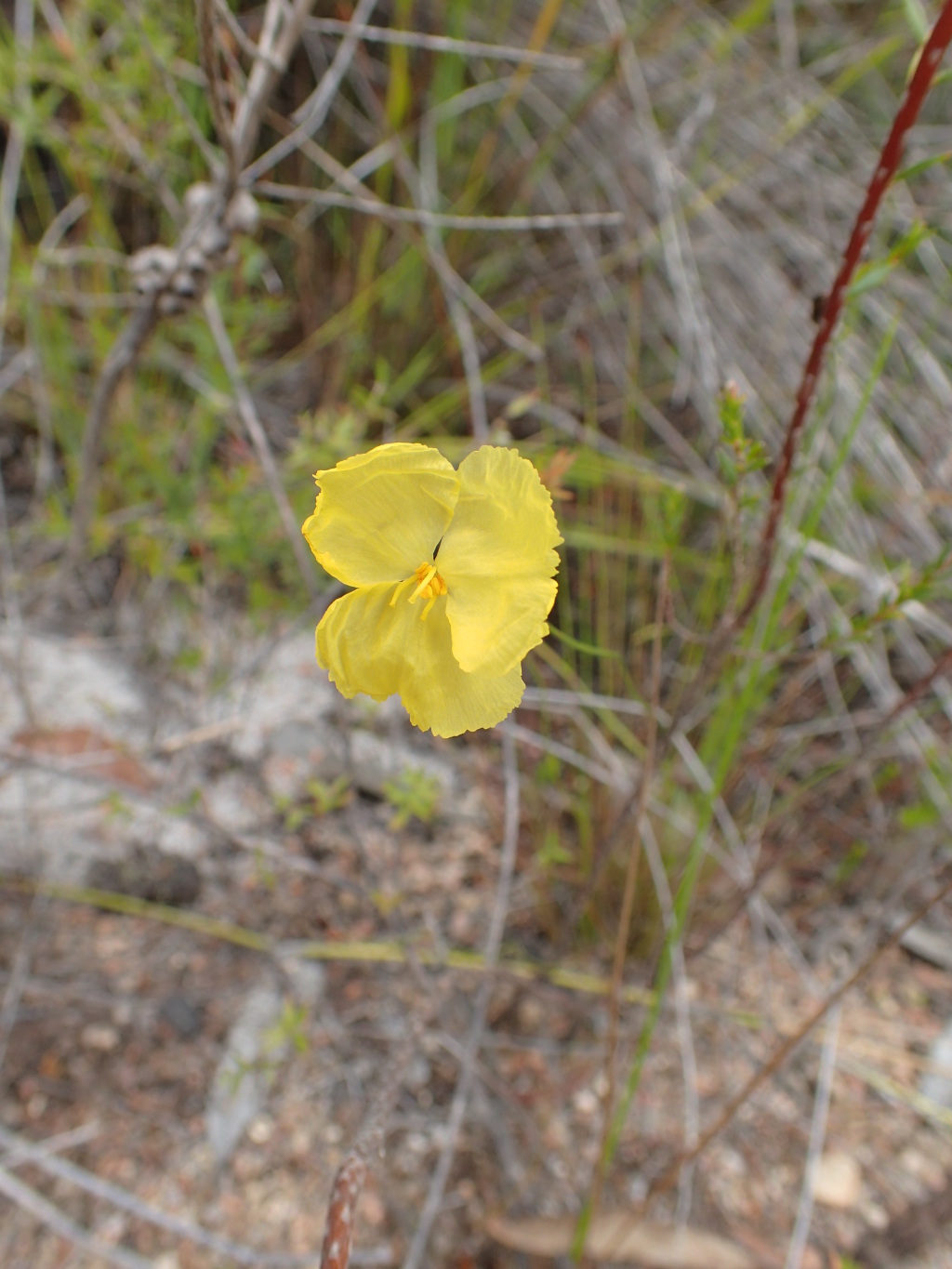Xyridaceae
Perennial or sometimes annual herbs, usually of marshy areas. Leaves mostly or all basal, distichous or occasionally spirally arranged, basally with an open sheath; lamina narrow, flat to cylindric or filiform, often "grass-like". Inflorescences usually many; each a globose to cylindric spike, and each borne on a long axis which is usually at least as long as leaves. Flowers bisexual, usually sessile, subtended by a bract; sepals 3, often unequal in size; petals 3, regular or irregular, basal half much narrower than distal half, or sometimes partly fused basally, yellow or less frequently blue or white; stamens 3 (or 6), opposite petals; staminodes sometimes present; filaments short and joined to petals or corolla tube; carpels 3, fused, superior; ovary 1- or (at least partially) 3-chambered; style simple or 3-branched distally; ovules (1–)many. Fruit capsular, sometimes enclosed by persistent corolla-tube; seeds small with endosperm.
4 genera with c. 250 species (mostly in the genus Xyris), common in tropical and subtropical region; only Xyris occurs in Victoria.
Conn, B.J. (1994). Xyridaceae. In: Walsh, N.G.; Entwisle, T.J., Flora of Victoria Vol. 2, Ferns and Allied Plants, Conifers and Monocotyledons, pp. 173–175. Inkata Press, Melbourne.
 Spinning
Spinning

